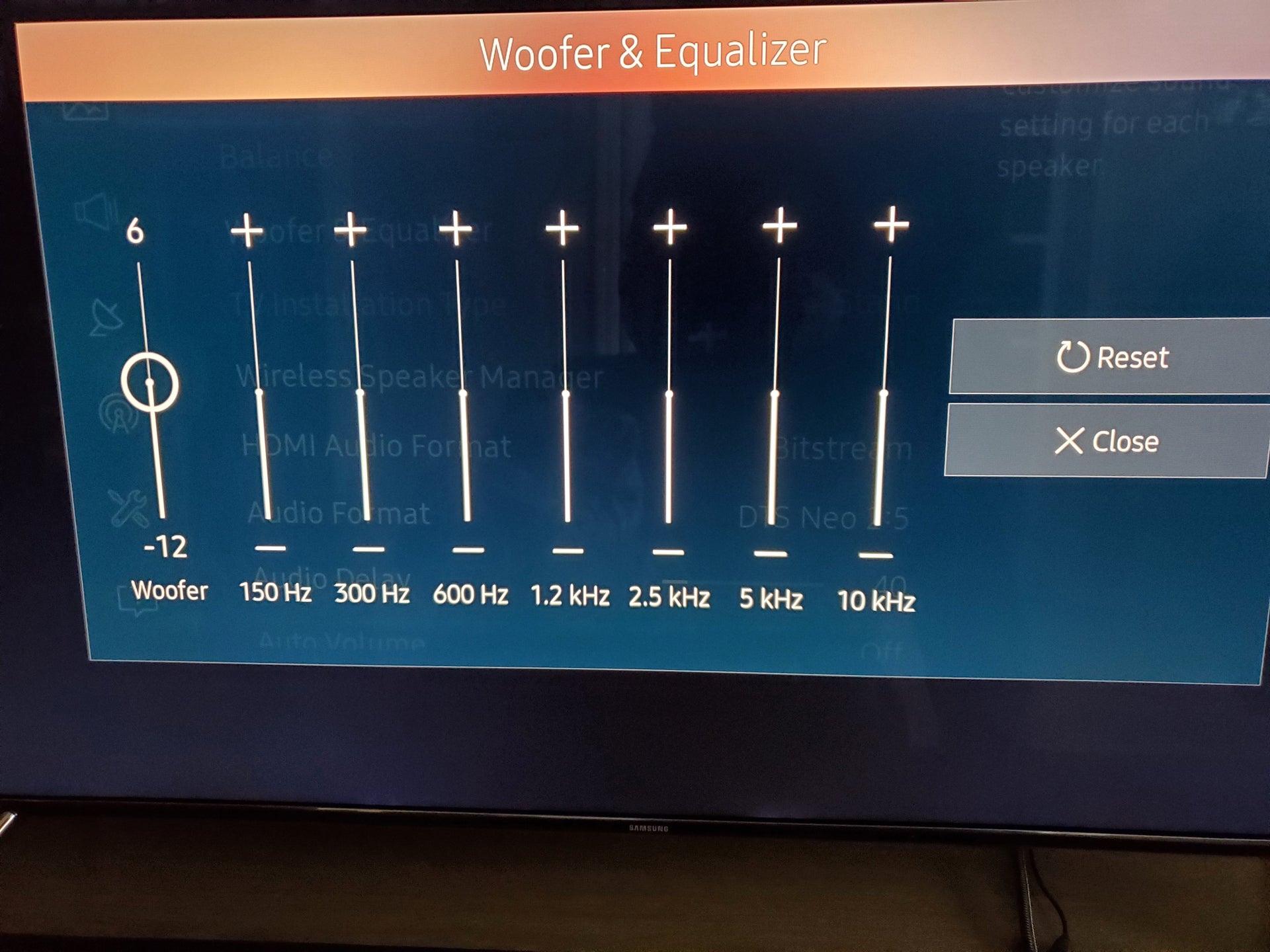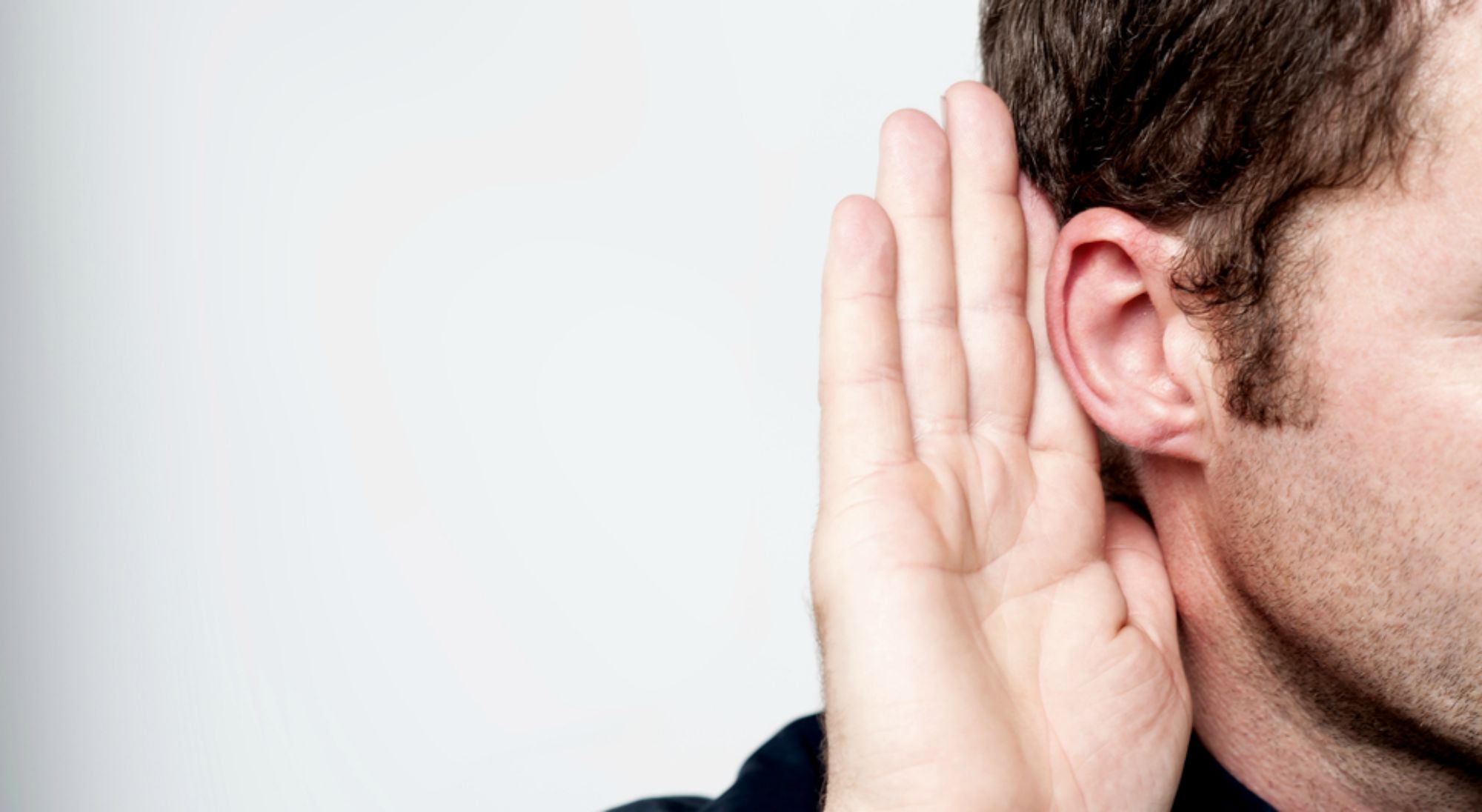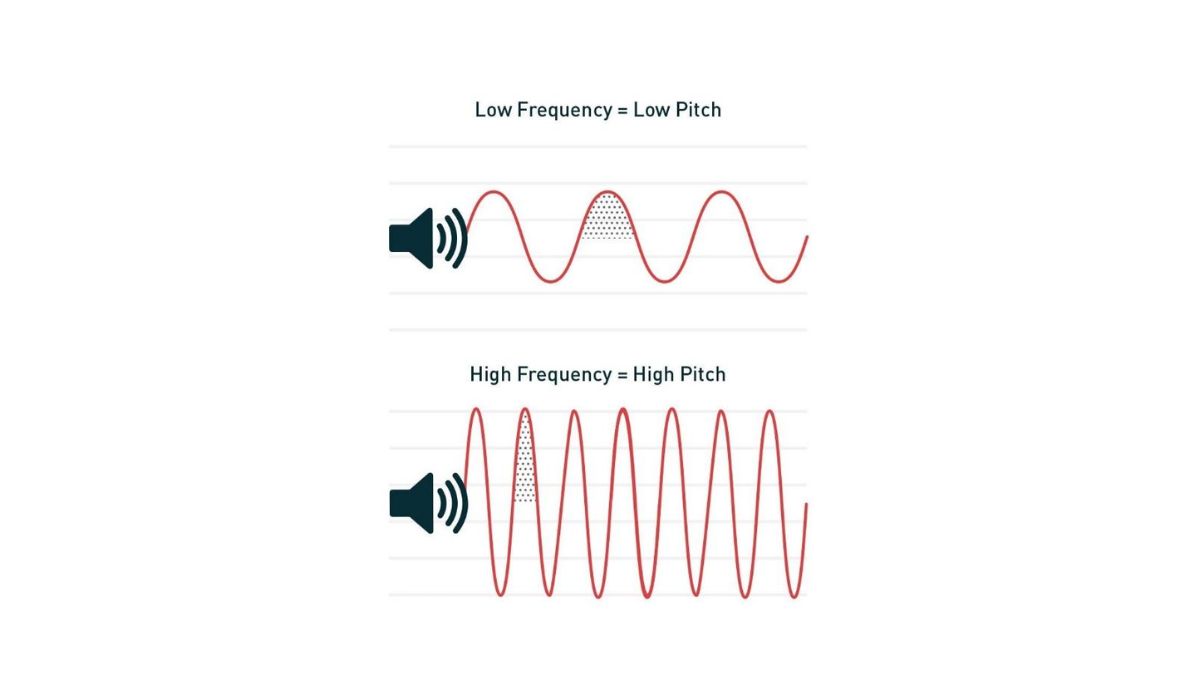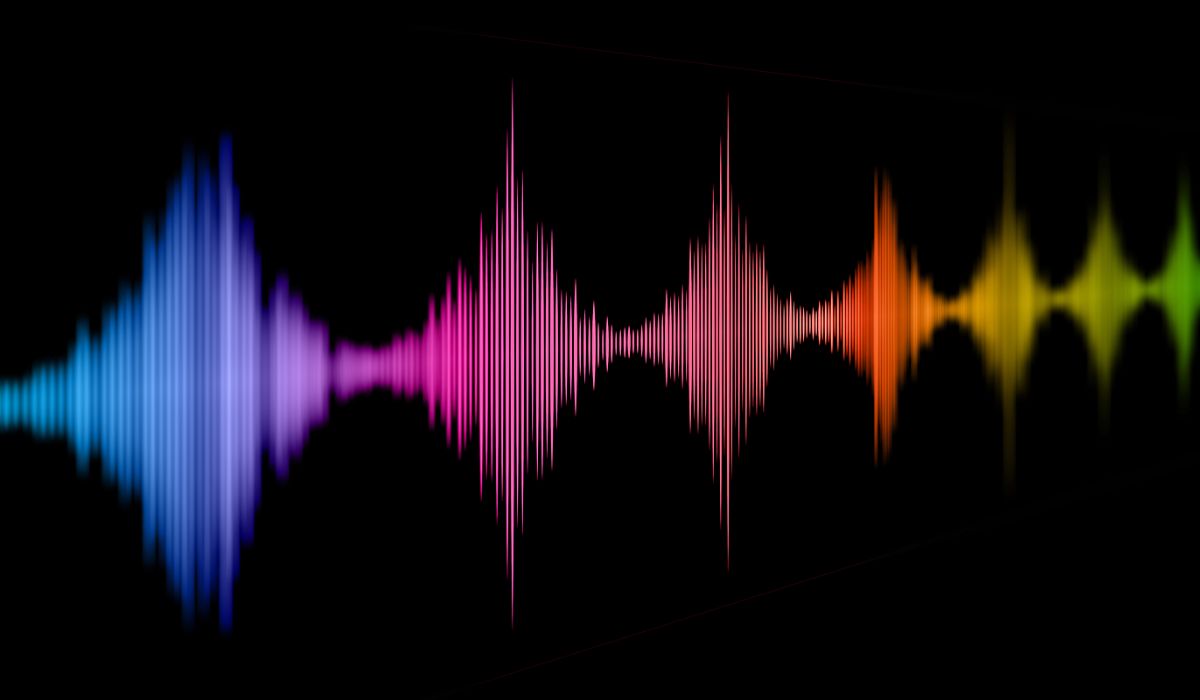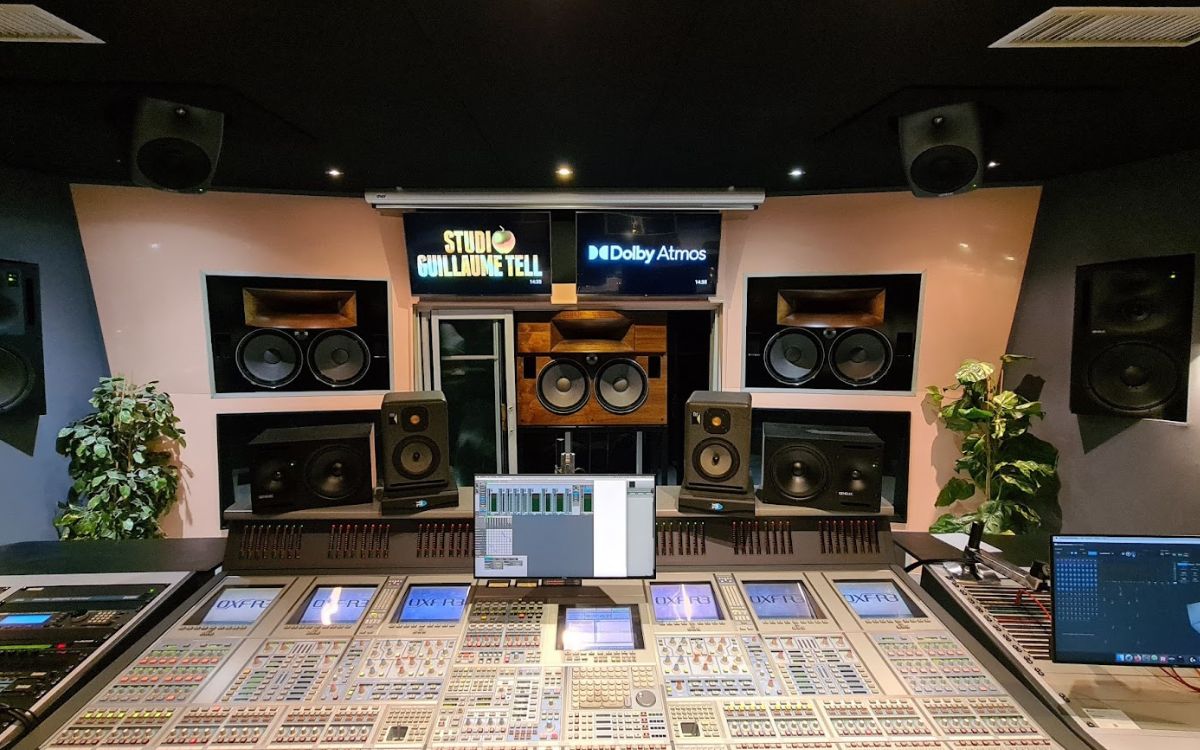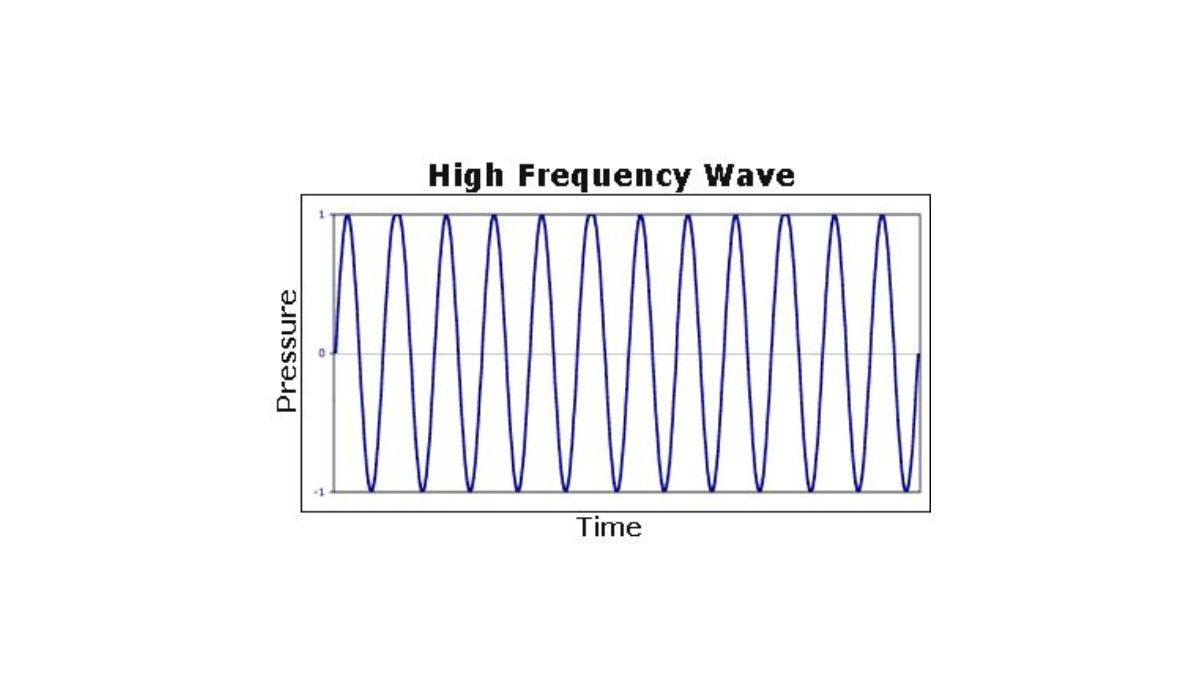Home>Production & Technology>Sound>What Is A Speech Sound Disorder


Sound
What Is A Speech Sound Disorder
Published: December 17, 2023
Learn about speech sound disorders and how they affect communication. Discover the causes, symptoms, and treatment options for sound disorders.
(Many of the links in this article redirect to a specific reviewed product. Your purchase of these products through affiliate links helps to generate commission for AudioLover.com, at no extra cost. Learn more)
Table of Contents
- Introduction
- Definition of Speech Sound Disorder
- Causes of Speech Sound Disorder
- Types of Speech Sound Disorders
- Signs and Symptoms of Speech Sound Disorder
- Assessment and Diagnosis of Speech Sound Disorder
- Treatment Options for Speech Sound Disorder
- Speech Therapy Techniques for Speech Sound Disorder
- Tips for Parents and Caregivers of Children with Speech Sound Disorder
- Conclusion
Introduction
Speech sound disorder is a term used to describe a communication disorder characterized by difficulty in producing and articulating speech sounds. Also known as phonological disorder or articulation disorder, it affects the clarity and intelligibility of speech. Children and adults with speech sound disorder may have trouble pronouncing certain sounds, substituting one sound for another, or omitting sounds entirely.
This disorder can have a significant impact on an individual’s ability to effectively communicate and interact with others. It can affect academic performance, social interactions, self-confidence, and overall quality of life. Early identification and intervention are crucial in managing speech sound disorder and promoting successful communication development.
Speech sound disorder can manifest in various ways and may present differently in each individual. Some may struggle with specific sounds, while others may have difficulty with certain patterns of speech sound production. Understanding the causes, types, signs, and available treatment options for speech sound disorder is essential in order to provide necessary support and intervention for individuals affected by this condition.
This article aims to provide a comprehensive overview of speech sound disorder, including its definition, causes, types, signs and symptoms, assessment and diagnosis, treatment options, and tips for parents and caregivers. By gaining a deeper understanding of speech sound disorder, we can work towards creating a more inclusive and supportive environment for individuals with communication difficulties.
Definition of Speech Sound Disorder
Speech sound disorder refers to a communication disorder in which individuals have difficulty producing and articulating speech sounds correctly. It is a broader term that encompasses two specific types of disorders: phonological disorders and articulation disorders.
Phonological disorders occur when individuals have difficulty understanding and using the sound system of a specific language. They may exhibit patterns of errors, such as substituting one sound for another or deleting certain sounds from words. These errors can affect the overall clarity of their speech and can make it difficult for others to understand them.
Articulation disorders, on the other hand, involve difficulties with the physical production of speech sounds. This may include mispronouncing or distorting certain sounds, omitting sounds from words, or having difficulty coordinating the movements of the lips, tongue, and jaw to produce clear speech. Articulation disorders typically affect specific sounds or groups of sounds.
It is important to note that speech sound disorder is different from typical speech development errors that are common in young children as they learn to speak. Children often make errors in speech sounds as they develop language skills, but these errors are usually outgrown and do not impact overall communication ability. Speech sound disorder, however, persists beyond the expected age and can significantly impact an individual’s ability to effectively communicate.
The severity of speech sound disorder can vary greatly from mild to severe. Some individuals may have difficulties with only a few sounds, while others may struggle with multiple sounds or entire patterns of speech sound production. The specific sounds or patterns affected will depend on the individual and the nature of their disorder.
It is important to seek professional evaluation and diagnosis from a licensed speech-language pathologist if a speech sound disorder is suspected. They will assess the individual’s speech sound production, identify any patterns or errors, and determine the appropriate course of treatment.
Causes of Speech Sound Disorder
The exact causes of speech sound disorder are not fully understood, but it is believed to be a combination of genetic, neurological, and environmental factors. Here are some of the possible causes:
- Genetic Factors: Some individuals may be predisposed to speech sound disorder due to genetic factors. Certain genetic mutations or inherited traits can affect speech and language development.
- Neurological Factors: Speech sound disorder can also be linked to neurological conditions or abnormalities that affect the areas of the brain responsible for speech production. Conditions such as cerebral palsy, Down syndrome, and hearing impairments can contribute to speech sound difficulties.
- Speech and Language Delay: Children who experience delays in speech and language development can be at a higher risk for speech sound disorder. These delays may be due to a variety of factors such as limited exposure to language, lack of stimulation, or developmental disorders.
- Structural Abnormalities: Structural abnormalities in the oral cavity, such as cleft palate or malformations of the lips, tongue, or jaw, can affect speech sound production and contribute to speech sound disorder.
- Hearing Loss: Children with hearing impairments or chronic ear infections that affect their ability to hear and process speech sounds may experience difficulties in producing speech sounds accurately.
- Environmental Factors: Environmental factors, such as a lack of exposure to language or a language-rich environment, can hinder speech sound development. Additionally, inconsistent or incorrect modeling of speech sounds by caregivers or exposure to multiple languages at an early age can contribute to speech sound difficulties.
It is important to note that the exact cause of speech sound disorder can vary from individual to individual. In many cases, it may be a combination of several factors rather than a single cause. Identifying the underlying cause or causes can help inform the appropriate treatment and intervention strategies for individuals with speech sound disorder.
Types of Speech Sound Disorders
Speech sound disorders can be classified into different types based on the specific nature of the difficulties an individual experiences. The two main types of speech sound disorders are phonological disorders and articulation disorders. Let’s explore each type in more detail:
- Phonological Disorders: Phonological disorders involve difficulties with the sound system of a particular language. Individuals with phonological disorders struggle with understanding and using the rules that govern the production and organization of speech sounds. This can result in patterns of errors, such as substituting one sound for another, omitting sounds, or using incorrect sound placements in words. Phonological disorders often affect multiple sounds or sound patterns, which impact the clarity and intelligibility of speech.
- Articulation Disorders: Articulation disorders refer to difficulties with the physical production of specific speech sounds. Individuals with articulation disorders may have trouble pronouncing certain sounds correctly. This can manifest as substituting one sound for another, distorting sounds, omitting sounds, or having difficulty coordinating the movements required for clear articulation. Articulation disorders can affect individual sounds or specific groups of sounds.
Within these two main types of speech sound disorders, there can be additional subtypes or classifications based on the specific characteristics and patterns observed in an individual’s speech. Some examples include:
- Phonological Processes: These are patterns of errors observed in the production of speech sounds. Examples include fronting (substituting sounds produced at the back of the mouth with sounds produced at the front) or cluster reduction (omitting one or more sounds in a consonant cluster).
- Articulation Disorders by Sound: Some individuals may struggle with specific sounds or groups of sounds. For example, they may have difficulty with the /r/ sound or struggle with producing sounds that require specific tongue placements, such as /th/ or /s/.
It is important to note that speech sound disorders can vary in severity and presentation among individuals. Each person’s disorder will have its own unique characteristics and challenges. Identifying the specific type and subtype of speech sound disorder is crucial in developing appropriate intervention strategies to target individual needs.
Signs and Symptoms of Speech Sound Disorder
Speech sound disorder can manifest in various ways, and the signs and symptoms can vary depending on the individual and the specific type and severity of the disorder. Here are some common signs and symptoms to look out for:
- Speech Intelligibility: Individuals with speech sound disorder often have reduced speech intelligibility, meaning that their speech may be difficult to understand. They may be frequently asked to repeat themselves, and others may struggle to comprehend their intended message.
- Articulation Difficulties: Articulation errors are common in speech sound disorder. These errors can include substituting one sound for another, omitting sounds from words, distorting sounds, or struggling with specific sounds or sound combinations.
- Phonological Patterns: Individuals with phonological disorders may exhibit consistent patterns of errors in their speech. These errors can involve substituting one sound for another, simplifying the pronunciation of certain sounds, or deleting sounds altogether.
- Speech Development Delays: A delay in speech and language development is often a red flag for speech sound disorder. Children with this disorder may struggle to reach speech milestones, such as babbling, forming simple words, or producing age-appropriate sounds.
- Difficulty with Complex Sounds or Words: Certain sounds or words that require more complex speech movements or coordination may pose significant difficulties for individuals with speech sound disorder. They may struggle with sounds like /r/, /th/, or /s/, or have difficulty pronouncing multisyllabic words.
- Reduced Confidence in Speaking: Individuals with speech sound disorder may become self-conscious or have reduced confidence in their speaking abilities. They may avoid certain words or situations that they find challenging, leading to a reluctance to engage in conversation or express themselves verbally.
- Difficulties with Reading and Spelling: Speech sound disorder can also impact reading and spelling abilities. Individuals may struggle with matching letter sounds, identifying phonetic patterns, or sounding out words, which can affect overall literacy skills.
If you notice any of these signs or symptoms in yourself or a loved one, it is important to seek professional evaluation and diagnosis from a licensed speech-language pathologist. They can assess the speech sound production, identify any underlying difficulties, and develop an appropriate treatment plan.
Remember that early intervention is crucial for effectively managing speech sound disorder and improving communication skills. With the right support and therapy, individuals with speech sound disorder can make significant progress and enhance their overall speech intelligibility and confidence.
Assessment and Diagnosis of Speech Sound Disorder
Assessment and diagnosis of speech sound disorder involve a comprehensive evaluation conducted by a licensed speech-language pathologist (SLP). The assessment process aims to identify the nature, severity, and underlying causes of the speech sound difficulties. Here is an overview of the assessment and diagnostic procedures:
Case History and Interviews: The SLP will begin by collecting information about the individual’s medical history, developmental milestones, and any concerns raised by the individual or their family. This helps provide valuable background information and context for the assessment.
Speech Sound Assessment: The SLP will assess the individual’s speech sound production through various tasks. These may include asking the individual to say specific words or phrases, imitate sounds and words, engage in conversation, and read aloud. The SLP will listen for errors in articulation, sound substitutions, omissions, distortions, and any patterns of errors.
Language Evaluation: Since speech sound disorder can sometimes co-occur with language difficulties, the SLP may also evaluate the individual’s overall language skills, including comprehension, vocabulary, grammar, and pragmatics.
Hearing Evaluation: A hearing assessment is typically conducted to rule out any hearing impairments or related issues that may be contributing to the speech sound difficulties. This may involve a pure-tone audiometry test or other assessments depending on the individual’s age and needs.
Oral-Motor Examination: An oral-motor examination may be conducted to assess the coordination and movement of the lips, tongue, and jaw during speech production. This helps determine if any structural or functional factors are impacting speech sound production.
Standardized Tests: The SLP may utilize standardized tests that have normative data to compare the individual’s performance to peers of the same age. These tests can provide objective information about the severity of the speech sound disorder and assist in developing an appropriate treatment plan.
Based on the assessment results, the SLP will diagnose the speech sound disorder and provide recommendations for intervention. The diagnosis will be specific to the type, severity, and underlying causes identified during the assessment process.
It is important to note that assessment and diagnosis should always be conducted by qualified professionals with expertise in speech-language pathology. This ensures accurate diagnosis and appropriate and individualized intervention for those with speech sound disorder.
Treatment Options for Speech Sound Disorder
Treatment for speech sound disorder is typically provided by a speech-language pathologist (SLP) and aims to improve speech intelligibility and correct speech sound errors. The specific treatment approach will depend on the individual’s age, severity of the disorder, and underlying causes. Here are some common treatment options:
- Articulation Therapy: This therapy focuses on improving the physical production of specific speech sounds. The SLP will work with the individual to teach correct tongue and lip placement, airflow, and coordination needed for accurate sound production. Techniques may include modeling, repetition, and practice exercises.
- Phonological Therapy: Phonological therapy targets the underlying patterns of errors in speech sound production. The SLP helps individuals learn and internalize the rules and sound patterns of their language. Therapy activities may involve minimal pair exercises, wordplay, and auditory discrimination tasks.
- Oral-Motor Exercises: In some cases, oral-motor exercises may be included in the treatment plan to strengthen and improve the coordination of the muscles involved in speech production. These exercises focus on tongue, lip, and jaw movements to enhance articulation skills.
- Auditory Training: Auditory training helps individuals improve their ability to perceive and discriminate speech sounds. Activities may involve listening to different sounds, identifying subtle sound differences, and practicing sound recognition.
- Augmentative and Alternative Communication (AAC): In cases where speech sound disorder significantly impacts verbal communication, AAC systems can be used as a temporary or permanent means of communication support. AAC includes tools such as communication boards, sign language, or speech-generating devices.
- Parent/Caregiver Involvement: Involving parents and caregivers in therapy is essential for supporting a child’s progress outside of therapy sessions. The SLP may provide guidance and strategies for practicing speech exercises at home and incorporating speech targets into daily routines.
The duration and intensity of therapy will vary depending on the individual’s needs and progress. Therapy sessions may be conducted one-on-one or in group settings, depending on the specific goals and preferences of the individual and their family.
It is important to note that treatment outcomes can vary among individuals, and progress may take time. Consistency, practice, and ongoing support are key to maximizing the benefits of therapy. Regular follow-up assessments will be conducted to monitor progress and adjust the treatment plan as needed.
Remember, early intervention is crucial in managing speech sound disorder. Seeking professional help from a qualified SLP at the earliest signs of speech difficulties can greatly improve speech intelligibility and communication skills.
Speech Therapy Techniques for Speech Sound Disorder
Speech therapy techniques are designed to target specific speech sound errors and improve overall intelligibility. Speech-language pathologists (SLPs) employ various evidence-based techniques tailored to the individual’s needs. Here are some common speech therapy techniques used for speech sound disorder:
- Phonetic Cueing: SLPs use phonetic cueing to help individuals produce specific sounds correctly. This may involve visual cues such as mirrors to help with self-monitoring or tactile cues like placing the hand on the throat to feel vibrations during sound production.
- Articulation Drills: Articulation drills involve repetitive practice and drill exercises to help individuals improve their ability to produce specific speech sounds correctly. The SLP may use various activities and materials, such as flashcards, word lists, or interactive games, to engage and motivate the individual during practice.
- Minimal Pairs: Minimal pair activities involve contrasting two words that differ by one sound. By highlighting the difference between these words (e.g., “cat” vs. “hat”), individuals can develop phonological awareness and discriminate between similar sounds.
- Structured Practice: SLPs provide structured practice opportunities where individuals can focus on targeted speech sound goals. This may involve sentence completion tasks, conversation practice, or reading exercises that specifically focus on the sounds being targeted in therapy.
- Visual Feedback: Visual feedback tools, such as spectrograms or speech sound visualizers, can provide real-time visual representations of speech sounds. This visual feedback helps individuals monitor their own productions and make adjustments to improve accuracy.
- Phonological Awareness Activities: Phonological awareness activities focus on developing an individual’s understanding of the sound structure of words. This can include tasks such as rhyming, blending sounds into words, segmenting words, and manipulating sounds within words.
- Generalization Activities: SLPs incorporate generalization activities to help individuals transfer their newly acquired speech skills from the therapy room to real-life situations. These activities may involve practicing target sounds in different contexts, with different people, or in functional tasks.
It is important to note that speech therapy techniques may vary depending on the individual’s age, severity of the disorder, and specific speech sound goals. SLPs customize therapy sessions to address the specific needs and abilities of each individual.
Consistency and practice outside of therapy sessions are crucial for achieving progress. SLPs often provide home practice exercises and strategies for parents and caregivers to continue supporting the individual’s speech development outside of therapy.
Remember, the effectiveness of speech therapy techniques depends on the individual’s commitment, active participation, and consistent practice. With dedicated effort and guidance from an SLP, individuals with speech sound disorder can improve their speech intelligibility and enhance overall communication skills.
Tips for Parents and Caregivers of Children with Speech Sound Disorder
As a parent or caregiver of a child with speech sound disorder, you play a crucial role in supporting your child’s communication development. Here are some tips to help you navigate this journey:
- Seek Professional Help: If you suspect that your child may have speech sound disorder, it is important to seek an evaluation from a licensed speech-language pathologist (SLP). A professional diagnosis will help guide the appropriate treatment plan.
- Encourage Communication: Create a supportive environment that encourages your child to communicate. Make time for conversations, listen attentively, and provide opportunities for them to express themselves freely.
- Model Correct Speech: Be a positive speech model for your child. Speak clearly, pronounce words correctly, and encourage them to imitate your correct pronunciation.
- Practice Speech Targets: Work with your child to practice speech targets provided by the SLP. Engage in fun and interactive activities that focus on sounds or words your child is working on in therapy.
- Provide Opportunities for Speech: Create opportunities for your child to practice their speech skills in real-life situations. Encourage them to speak with family members, friends, or in social settings that promote conversation.
- Praise Effort and Progress: Recognize and praise your child’s efforts and progress in their speech development. Celebrate even small achievements to boost their confidence and motivation.
- Be Patient and Supportive: Understand that progress takes time, and each child progresses at their own pace. Be patient and offer continued support and encouragement throughout their speech therapy journey.
- Cooperate with the SLP: Maintain open communication with the SLP and follow their recommendations for home practice and strategies. Collaborate with them to reinforce therapy goals and techniques at home.
- Create a Language-Rich Environment: Surround your child with a language-rich environment that exposes them to a variety of words, books, and experiences. Engage in activities that spark their curiosity and expand their vocabulary.
- Foster Self-Expression: Encourage your child to express themselves in different ways, such as through drawing, writing, or using gestures. This helps them communicate their thoughts and feelings even if their verbal communication is still developing.
Remember, your support and encouragement play a vital role in your child’s progress. Being patient, consistent, and fostering a positive learning environment will help your child gain confidence, improve their speech skills, and thrive in their communication development.
Conclusion
Speech sound disorder can present challenges in an individual’s communication skills, but with early intervention and appropriate treatment, significant progress can be made. It is important to remember that each individual’s speech sound disorder is unique, and treatment strategies should be tailored to their specific needs. By working closely with a licensed speech-language pathologist (SLP) and implementing supportive strategies at home, individuals with speech sound disorder can improve their speech intelligibility and overall communication abilities.
Understanding the types, causes, and signs of speech sound disorder is key to identifying and addressing the condition. A thorough assessment and diagnosis by an SLP are crucial in developing an effective treatment plan. Treatment options may include articulation therapy, phonological therapy, oral-motor exercises, auditory training, and involvement of parents and caregivers in the therapy process.
Consistency, practice, and ongoing support are essential in the progress of speech sound disorder therapy. Parents and caregivers play a critical role in supporting their child’s communication development by creating a language-rich environment, modeling correct speech, and engaging in targeted practice activities. Celebrating small achievements and providing a positive and nurturing environment will help boost the child’s self-confidence and motivation.
Remember, speech sound disorder does not define an individual’s abilities or potential. With appropriate intervention, individuals with speech sound disorder can make significant improvements and thrive in their communication skills. The journey may require patience and perseverance, but the rewards of clearer and more effective communication are invaluable.
By raising awareness, seeking professional help, and providing support and understanding, we can create a more inclusive and supportive environment for individuals with speech sound disorder. Together, we can help individuals overcome communication difficulties and empower them to express themselves confidently.


